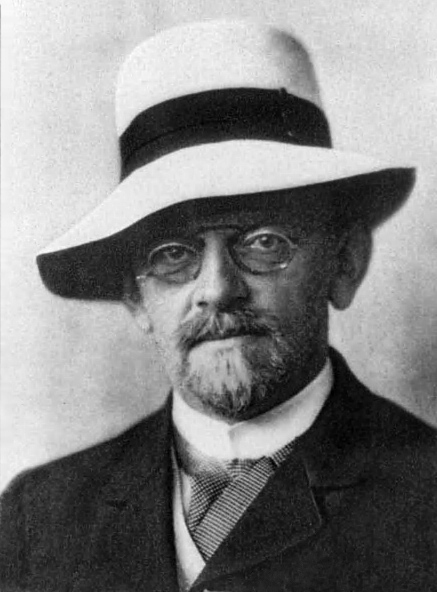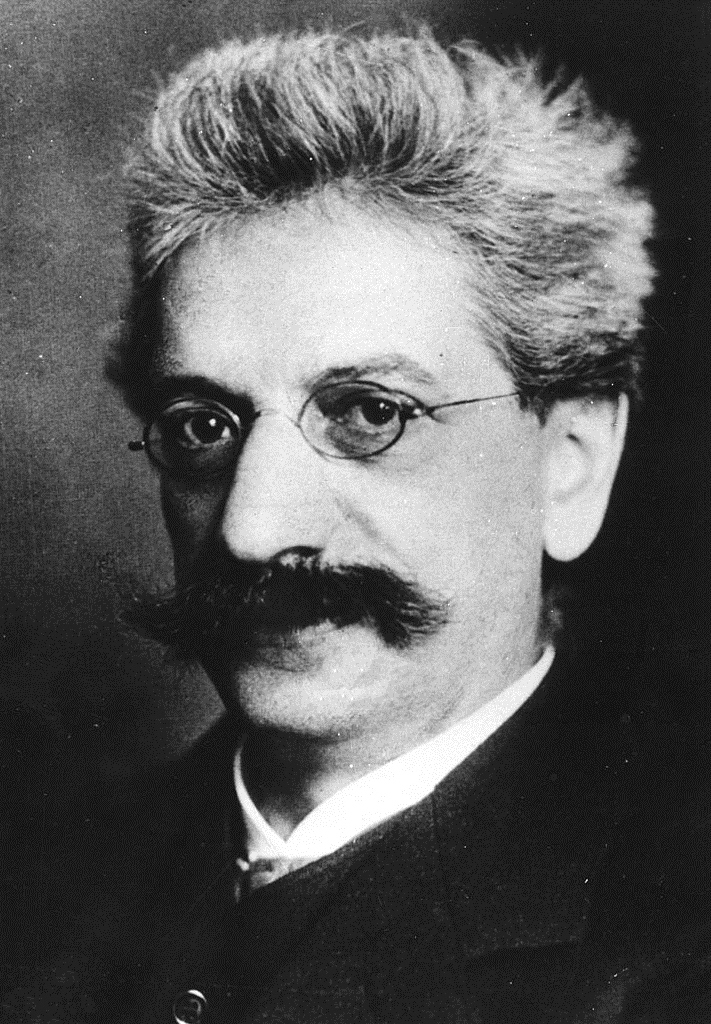|
Hilbert's Twenty-fourth Problem
Hilbert's twenty-fourth problem is a mathematical problem that was not published as part of the list of 23 problems known as Hilbert's problems but was included in David Hilbert's original notes. The problem asks for a criterion of simplicity in mathematical proofs and the development of a proof theory with the power to prove that a given proof is the simplest possible. The 24th problem was rediscovered by German historian Rüdiger Thiele in 2000, noting that Hilbert did not include the 24th problem in the lecture presenting Hilbert's problems or any published texts. Hilbert's friends and fellow mathematicians Adolf Hurwitz and Hermann Minkowski were closely involved in the project but did not have any knowledge of this problem. This is the full text from Hilbert's notes given in Rüdiger Thiele's paper. The section was translated by Rüdiger Thiele. In 2002, Thiele and Larry Wos published an article on Hilbert's twenty-fourth problem with a discussion about its relation to ... [...More Info...] [...Related Items...] OR: [Wikipedia] [Google] [Baidu] |
Hilbert's Problems
Hilbert's problems are 23 problems in mathematics published by German mathematician David Hilbert in 1900. They were all unsolved at the time, and several proved to be very influential for 20th-century mathematics. Hilbert presented ten of the problems (1, 2, 6, 7, 8, 13, 16, 19, 21, and 22) at the Paris conference of the International Congress of Mathematicians, speaking on August 8 at the Sorbonne. The complete list of 23 problems was published later, in English translation in 1902 by Mary Frances Winston Newson in the ''Bulletin of the American Mathematical Society''. Earlier publications (in the original German) appeared in and Nature and influence of the problems Hilbert's problems ranged greatly in topic and precision. Some of them, like the 3rd problem, which was the first to be solved, or the 8th problem (the Riemann hypothesis), which still remains unresolved, were presented precisely enough to enable a clear affirmative or negative answer. For other proble ... [...More Info...] [...Related Items...] OR: [Wikipedia] [Google] [Baidu] |
David Hilbert
David Hilbert (; ; 23 January 1862 – 14 February 1943) was a German mathematician, one of the most influential mathematicians of the 19th and early 20th centuries. Hilbert discovered and developed a broad range of fundamental ideas in many areas, including invariant theory, the calculus of variations, commutative algebra, algebraic number theory, the foundations of geometry, spectral theory of operators and its application to integral equations, mathematical physics, and the foundations of mathematics (particularly proof theory). Hilbert adopted and defended Georg Cantor's set theory and transfinite numbers. In 1900, he presented a collection of problems that set the course for much of the mathematical research of the 20th century. Hilbert and his students contributed significantly to establishing rigor and developed important tools used in modern mathematical physics. Hilbert is known as one of the founders of proof theory and mathematical logic. Life Early li ... [...More Info...] [...Related Items...] OR: [Wikipedia] [Google] [Baidu] |
Mathematical Proof
A mathematical proof is an Inference, inferential Argument-deduction-proof distinctions, argument for a Proposition, mathematical statement, showing that the stated assumptions logically guarantee the conclusion. The argument may use other previously established statements, such as theorems; but every proof can, in principle, be constructed using only certain basic or original assumptions known as axioms, along with the accepted rules of inference. Proofs are examples of exhaustive deductive reasoning which establish logical certainty, to be distinguished from empirical evidence, empirical arguments or non-exhaustive inductive reasoning which establish "reasonable expectation". Presenting many cases in which the statement holds is not enough for a proof, which must demonstrate that the statement is true in ''all'' possible cases. A proposition that has not been proved but is believed to be true is known as a conjecture, or a hypothesis if frequently used as an assumption for furthe ... [...More Info...] [...Related Items...] OR: [Wikipedia] [Google] [Baidu] |
Proof Theory
Proof theory is a major branchAccording to Wang (1981), pp. 3–4, proof theory is one of four domains mathematical logic, together with model theory, axiomatic set theory, and recursion theory. Barwise (1978) consists of four corresponding parts, with part D being about "Proof Theory and Constructive Mathematics". of mathematical logic that represents proofs as formal mathematical objects, facilitating their analysis by mathematical techniques. Proofs are typically presented as inductively-defined data structures such as lists, boxed lists, or trees, which are constructed according to the axioms and rules of inference of the logical system. Consequently, proof theory is syntactic in nature, in contrast to model theory, which is semantic in nature. Some of the major areas of proof theory include structural proof theory, ordinal analysis, provability logic, reverse mathematics, proof mining, automated theorem proving, and proof complexity. Much research also focuses ... [...More Info...] [...Related Items...] OR: [Wikipedia] [Google] [Baidu] |
Rüdiger Thiele
Rolf-Rüdiger Thiele (born 29 April 1943 in Polepp, Bohemia) is a German mathematician and historian of mathematics, known for his historical research on Hilbert's twenty-fourth problem. Education and career Thiele studied mathematics, physics, and psychology at the Martin Luther University of Halle-Wittenberg and received his promotion (Ph.D.) there in 1973. He then worked in the publishing business in Leipzig for B. G. Teubner Verlag and Salomon Hirzel Verlag. From 1986 to 2008 he worked at the ''Karl-Sudhoff-Institut für Geschichte der Medizin und der Naturwissenschaften'' (Karl Sudhoff Institute for the History of Medicine and Natural Sciences) at the University of Leipzig. He has held visiting positions at the Johannes Gutenberg University Mainz (from 1992 to 1995 as chair for the history of natural sciences), at TU Darmstadt, at the University of Bonn (from 1995 to 1996), and at the University of Toronto. In 2001 Thiele habilitated in the department of mathematics at the ... [...More Info...] [...Related Items...] OR: [Wikipedia] [Google] [Baidu] |
Adolf Hurwitz
Adolf Hurwitz (; 26 March 1859 – 18 November 1919) was a German mathematician who worked on algebra, analysis, geometry and number theory. Early life He was born in Hildesheim, then part of the Kingdom of Hanover, to a Jewish family and died in Zürich, in Switzerland. His father Salomon Hurwitz, a merchant, was not wealthy. Hurwitz's mother, Elise Wertheimer, died when he was three years old. Family records indicate that he had siblings and cousins, but their names have yet to be confirmed except for an older brother, Julius, with whom he developed an arithmetical theory for complex continued fractions circa 1890. Hurwitz entered the in Hildesheim in 1868. He was taught mathematics there by Hermann Schubert. Schubert persuaded Hurwitz's father to allow him to attend university, and arranged for Hurwitz to study with Felix Klein at Munich. Salomon Hurwitz could not afford to send his son to university, but his friend, Mr. Edwards, assisted financially. Educational career Hu ... [...More Info...] [...Related Items...] OR: [Wikipedia] [Google] [Baidu] |
Hermann Minkowski
Hermann Minkowski (; ; 22 June 1864 – 12 January 1909) was a German mathematician and professor at Königsberg, Zürich and Göttingen. He created and developed the geometry of numbers and used geometrical methods to solve problems in number theory, mathematical physics, and the theory of relativity. Minkowski is perhaps best known for his foundational work describing space and time as a four-dimensional space, now known as " Minkowski spacetime", which facilitated geometric interpretations of Albert Einstein's special theory of relativity (1905). Personal life and family Hermann Minkowski was born in the town of Aleksota, the Suwałki Governorate, the Kingdom of Poland, part of the Russian Empire, to Lewin Boruch Minkowski, a merchant who subsidized the building of the choral synagogue in Kovno, and Rachel Taubmann, both of Jewish descent. Hermann was a younger brother of the medical researcher Oskar (born 1858). In different sources Minkowski's nationality is var ... [...More Info...] [...Related Items...] OR: [Wikipedia] [Google] [Baidu] |
Syzygy (mathematics)
In linear algebra, a linear relation, or simply relation, between elements of a vector space or a module is a linear equation that has these elements as a solution. More precisely, if e_1,\dots,e_n are elements of a (left) module over a ring (the case of a vector space over a field is a special case), a relation between e_1,\dots,e_n is a sequence (f_1,\dots, f_n) of elements of such that :f_1e_1+\dots+f_ne_n=0. The relations between e_1,\dots,e_n form a module. One is generally interested in the case where e_1,\dots,e_n is a generating set of a finitely generated module , in which case the module of the relations is often called a syzygy module of . The syzygy module depends on the choice of a generating set, but it is unique up to the direct sum with a free module. That is, if S_1 and S_2 are syzygy modules corresponding to two generating sets of the same module, then they are stably isomorphic, which means that there exist two free modules L_1 and L_2 such that S_1\opl ... [...More Info...] [...Related Items...] OR: [Wikipedia] [Google] [Baidu] |
Larry Wos
Lawrence T. Wos (1930–2020) was an American mathematician, a researcher in the Mathematics and Computer Science Division of Argonne National Laboratory. Biography Wos studied at the University of Chicago, receiving a bachelor's degree in 1950 and a master's in mathematics in 1954, and went on for doctoral studies at the University of Illinois at Urbana-Champaign where he received PhD in 1957 supervised by Reinhold Baer. He joined the Argonne in 1957, and began using computers to prove mathematical theorems in 1963. Wos was congenitally blind. He was an avid bowler, the best male blind bowler in the US. Awards and honors In 1982, Wos and his colleague Steve Winker were the first to win the Automated Theorem Proving Prize, given by the American Mathematical Society.''Chicago Tribune'', November 18, 1982. In 1992, Wos was the first to win the Herbrand Award for his contributions to the field of automated deduction. A festschrift in his honor, ''Automated reasoning and its appl ... [...More Info...] [...Related Items...] OR: [Wikipedia] [Google] [Baidu] |
Automated Reasoning
In computer science, in particular in knowledge representation and reasoning and metalogic, the area of automated reasoning is dedicated to understanding different aspects of reasoning. The study of automated reasoning helps produce computer programs that allow computers to reason completely, or nearly completely, automatically. Although automated reasoning is considered a sub-field of artificial intelligence, it also has connections with theoretical computer science and philosophy. The most developed subareas of automated reasoning are automated theorem proving (and the less automated but more pragmatic subfield of interactive theorem proving) and automated proof checking (viewed as guaranteed correct reasoning under fixed assumptions). Extensive work has also been done in reasoning by analogy using induction and abduction. Other important topics include reasoning under uncertainty and non-monotonic reasoning. An important part of the uncertainty field is that of argumentati ... [...More Info...] [...Related Items...] OR: [Wikipedia] [Google] [Baidu] |




